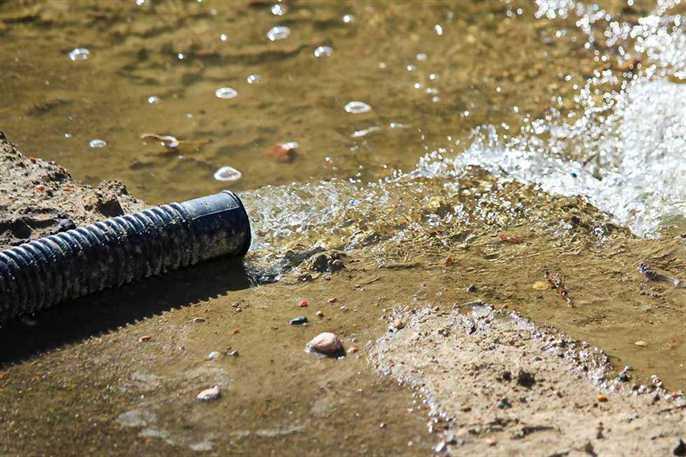An Definitive Guide to Caring for a Sump Pump
An Definitive Guide to Caring for a Sump Pump
Blog Article
Listed here on the next paragraphs you can find some superb advice relating to Keep Your Sump Pump Clean, It'll Keep You Dry.

Sump pumps are crucial components in many homes, specifically in locations susceptible to flooding or excessive moisture. They assist stop water damage by successfully getting rid of excess water from basements or crawl spaces. Nonetheless, like any other home appliance, sump pumps require regular maintenance to guarantee they function properly when needed the most. Cleaning your sump pump is an important part of its maintenance, and recognizing how to do it effectively can save you from expensive repairs and potential disasters.
Introduction
Maintaining a clean sump pump is vital for its proper performance and durability. Overlooking this essential task can cause clogs, malfunctions, and eventually, water damage to your building. Therefore, learning exactly how to clean up a sump pump is important for house owners that depend on these gadgets to maintain their basements dry and protected.
Indications of a Dirty Sump Pump
Recognizing when your sump pump needs cleaning is critical for stopping potential malfunctions. Some common indicators that show a dirty sump pump consist of unusual noises during procedure, lowered water circulation, and visible particles in the pit. If you discover any of these symptoms, it's vital to clean your sump pump without delay to stay clear of any more concerns.
Preparing for Cleansing
Prior to you start cleaning your sump pump, it's necessary to take some safety and security preventative measures. Begin by shutting down the power to the pump to prevent any electrical mishaps. Additionally, use proper safety gear, such as handwear covers and safety glasses, to protect on your own from dirt, debris, and possible virus.
Understanding the Sump Pump
Prior to diving right into the cleaning process, it's vital to have a standard understanding of just how a sump pump functions. Usually set up in a pit or basin listed below the basement flooring, a sump pump consists of numerous vital parts, including a pump, a float button, and a discharge pipe. When water accumulates in the pit, the float switch activates the pump, which then pumps the water out via the discharge pipe, far from the building's foundation.
Detailed Overview to Cleaning a Sump Pump
Turning off the Power
Begin by disconnecting the power supply to the sump pump to stop any accidents while cleaning.
Checking for Proper Performance
Before re-installing the pump, execute a quick test to ensure that the float button activates the pump correctly. Put some water right into the sump pit and observe the pump's operation. If everything is functioning correctly, you can reassemble the pump and reconnect the power supply.
Removing Debris and Dirt
Use a pail or an inside story to get rid of any noticeable debris, dust, or sediment from the sump pit. Dispose of the debris correctly to stop it from blocking the pump or the discharge pipeline.
Cleaning up the Pump and Float Switch
When the pit is clear of particles, very carefully remove the pump from the pit. Evaluate the pump and the float switch for any type of indicators of damage or wear. Use a soft brush or fabric to clean the surfaces and remove any built up crud.
Purging the System
After cleansing the pump and float button, purge the sump pit with tidy water to get rid of any staying dirt or debris. This will certainly aid make certain that the pump runs efficiently and effectively.
Maintenance Tips to Maintain Your Sump Pump Clean
Along with periodic cleansing, there are a number of upkeep tips you can comply with to keep your sump pump in ideal condition:
Conclusion
Cleansing your sump pump is an essential element of its upkeep and makes certain that it runs effectively when you require it the most. By complying with the actions laid out in this guide and incorporating normal maintenance right into your regimen, you can prolong the life-span of your sump pump and secure your home from water damage.
6 STEPS ON HOW TO CLEAN A SUMP PUMP PROPERLY
UNDERSTANDING SUMP PUMPS
Your sump pump plays a crucial role in protecting your home by managing and removing excess water. It primarily functions as a “shield”, guarding your basement against the damaging effects of water accumulation. The pump is housed in a sump pit in the lowest part of your basement, and its job is to pump out any water that collects there.
During heavy rainfalls or when snow melts rapidly, water can infiltrate your basement, posing potential risks like flooding, structural damage, and harmful mold growth. Here, the sump pump springs into action, pumping out the intruding water and directing it away from your home.
SAFETY FIRST
Before cleaning, remember to prioritize safety. Disconnect the sump pump from the power source to prevent any accidental electric shocks. Also, wear sturdy gloves to protect your hands from any sharp or dirty components within the pump.
REMOVE THE SUMP PUMP
After ensuring your safety, the next step is to remove the sump pump from its pit. Doing this might require careful maneuvering as you don’t want to damage any pump components. Once removed, clean the sump pit to remove any accumulated debris or sludge.
INSPECT THE PUMP
Inspect the pump for any visible signs of wear or damage. Check the power cord, float switch, and impeller housing. If any components look worn out or damaged, consider replacing them to ensure optimal performance.
CLEAN THE PUMP
Thoroughly clean the pump with warm, soapy water. Make sure to rid it of any dirt, gravel, or other debris that might impede its performance. You can use a toothbrush to clean the small, hard-to-reach parts of the pump.
REINSTALL THE SUMP PUMP
Reinstall the pump into the sump pit Make sure it’s positioned correctly to remove the water effectively Once it’s back in place, reconnect it to the power source TEST THE PUMP
Finally, pour some water into the pit to ensure the pump works correctly. It should start automatically and begin pumping out the water; if it doesn’t, check the power source and the positioning of the pump.
Remember, while cleaning your sump pump is an essential part of home maintenance, hiring a professional plumber for a thorough inspection and cleaning at least once a year is also important. This will ensure that your pump is in optimal condition, ready to protect your home from potential water damage.
BEST PRACTICES FOR CLEANING SUMP PUMP DISCHARGE PIPES
Regular Inspection: Regularly inspect your discharge pipes, especially during heavy rainfall or snowmelt periods. Look for any signs of blockage or damage. Early detection of problems can prevent serious issues down the line. Periodic Cleaning: Over time, sediment and debris can accumulate in the discharge pipes, impeding the flow of water. Regular cleaning helps keep the pipes clear and functioning efficiently. You can use a high-pressure water jet to effectively clean the pipes. Insulation During Winter: In colder climates, discharge pipes can freeze, blocking the outflow of water. Protect your discharge pipes from freezing temperatures by insulating them with foam pipe insulation. This will ensure the sump pump can continue to discharge water even in freezing conditions. Proper Positioning: The discharge pipe should be positioned to direct water away from your home’s foundation. Improper positioning can lead to water seeping back into the basement. Ensure the pipe is long enough and angled correctly. Installation of a Check Valve: A check valve prevents water from flowing back into your sump pit after the pump has pushed it out. Installing a check valve helps maintain the efficiency of your sump pump and reduces the risk of flooding. Minimize Pipe Turns: Every curve or turn in the discharge pipe can decrease the efficiency of water flow. By minimizing turns and bends in your discharge pipe, you can increase the efficiency of your sump pump. https://www.fullspeedplumbing.com/how-to-clean-a-sump-pump-properly9999/

As an avid person who reads on Steps to Cleaning Your Sump Pump Properly, I figured sharing that piece of content was appropriate. Do you know another person who is interested in the subject? Please feel free to promote it. Many thanks for your time spent reading it.
Book Now Report this page